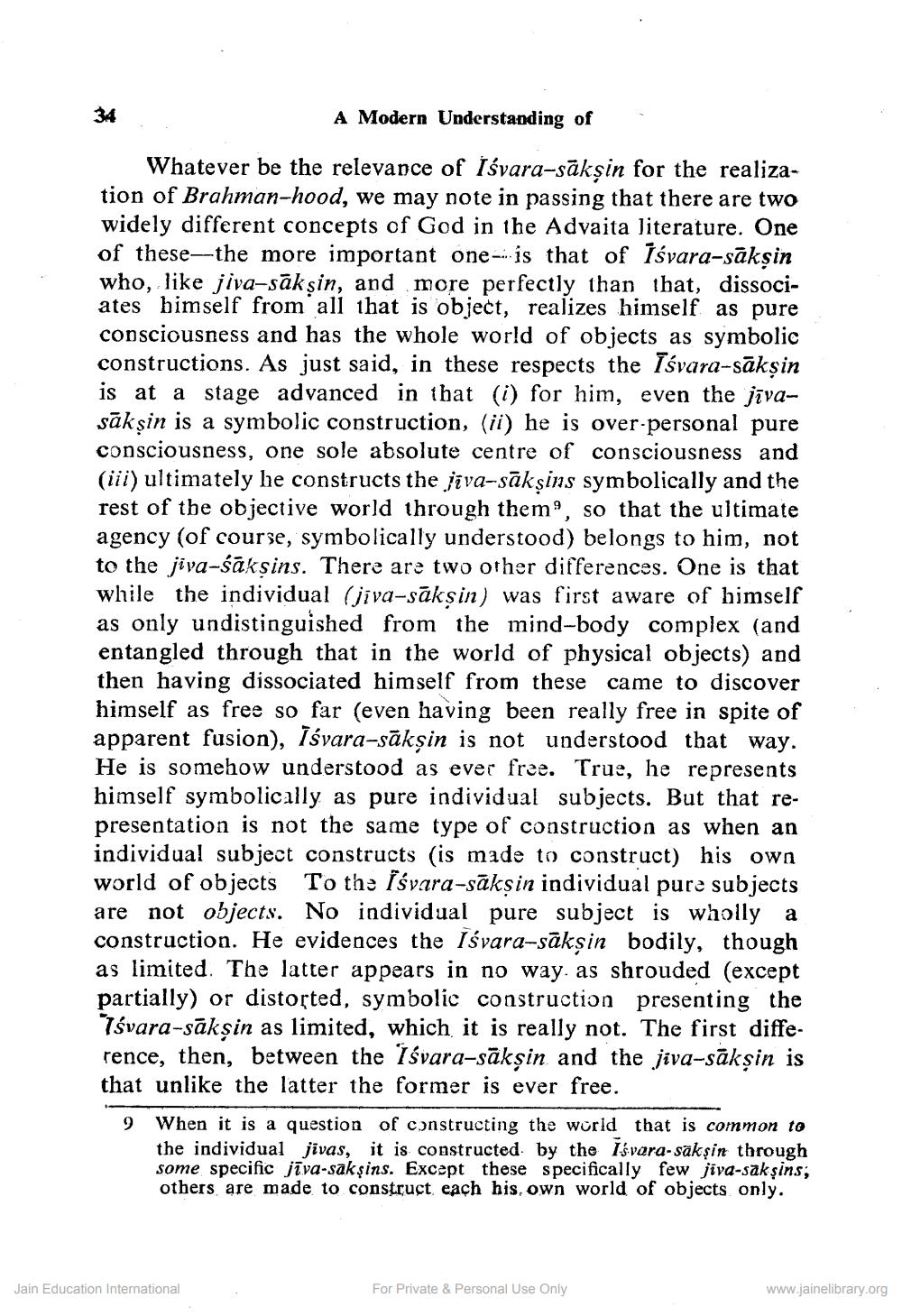________________
A Modern Understanding of
Whatever be the relevance of Íśvara-sākşin for the realization of Brahman-hood, we may note in passing that there are two widely different concepts of God in the Advaita literature. One of these--the more important one--is that of īśvara-sāksin who, like jiva-sāksin, and more perfectly than that, dissociates himself from all that is object, realizes himself as pure consciousness and has the whole world of objects as symbolic constructions. As just said, in these respects the Tsvara-sāksin is at a stage advanced in that (i) for him, even the jīvasāksin is a symbolic construction, (ii) he is over-personal pure consciousness, one sole absolute centre of consciousness and (iii) ultimately he constructs the jīva-sāksins symbolically and the rest of the objective world through them, so that the ultimate agency (of course, symbolically understood) belongs to him, not to the jiva-śāksins. There are two other differences. One is that while the individual (jiva-sāksin) was first aware of himself as only undistinguished from the mind-body complex (and entangled through that in the world of physical objects) and then having dissociated himself from these came to discover himself as free so far (even having been really free in spite of apparent fusion), īśvara-sākşin is not understood that way. He is somehow understood as ever free. True, he represents himself symbolically as pure individual subjects. But that representation is not the same type of construction as when an individual subject constructs (is made to construct) his own world of objects To the Isvara-sāksin individual pure subjects are not objects. No individual pure subject is wholly a construction. He evidences the Iśvara-sākşin bodily, though as limited. The latter appears in no way as shrouded (except partially) or distorted, symbolic construction presenting the Tsvara-sākşin as limited, which it is really not. The first difference, then, between the 1śvara-sākṣin and the jiva-sākşin is that unlike the latter the former is ever free. 9 When it is a question of constructing the world that is common to
the individual jivas, it is constructed by the Isvara-sak şin through some specific jīva-saksins. Except these specifically few jiva-saksins, others are made to construct each his, own world of objects only.
Jain Education International
For Private & Personal Use Only
www.jainelibrary.org




